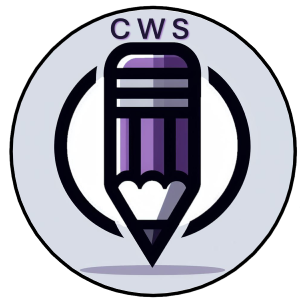 To blog or not to blog? It’s a valid question.
To blog or not to blog? It’s a valid question.
eMarketer reports blogging is gaining popularity with companies, but fewer than half will be blogging by 2012.
According to Parker Trewin at Genius.com, “Whether it’s the time commitment, lack of resources or lack of demonstrable ROI…surveys show that blogging…still is not a ‘must have’ in the marketing toolkit.”
Why not?
I have to agree with Mr. Trewin that lack of time and resources is a big culprit. With the widespread layoffs of the last few years, marketing departments are strapped for both time and people. The need to do “one more thing” that takes considerable time and planning to show results falls to the bottom of the list. Especially if the fear is the results won’t be positive and jobs will be at risk.
There is also evidence traditional content marketing trumps social media activity, such as blogs. When buyers say promotional content, online tutorials, and buying guides are more likely to inspire clickthroughs than blog content, it’s easy to see why blogging isn’t the first priority.
Nor should it be.
For blogging to pay dividends, it has to be part of an overall content marketing strategy. Companies who jump into blogging without figuring out how it fits into their strategy are bound for trouble.
So why bother with blogging at all?
Well, because blogging can pay handsome dividends. It’s no secret search engines love blogs. Companies with effective blogs are finding their blog now sees more traffic than their home page. And great blog content can help increase everything from number of visits to the time spent on the site.
Great marketers know telling stories, giving away content buyers value, and building relationships are important skills. Engaging with the community and practicing those skills via blogging can be a valuable addition to any marketing program.
So whether you are on the fence with blogging, trying to resuscitate a struggling blog, or looking for ways to enhance a blog that’s starting to gain ground, consider these tactics to help your efforts be more effective.
Content Strategy First
Having a blog doesn’t mean you have a content strategy. Popping out content if and when you can won’t work. Especially if the majority of what you put out there is already on your site or full of self-promotional content.
If you are already creating content for your buyers (and you are, aren’t you?) then consider how the blog fits into the content you are already building. Can you use a blog article to alert buyers to your recently released buying guide? Provide content that helps define a problem and point them to your solution content? Promote an online tool buyers would value?
Because blog pages often end up in search results higher than other types of web pages, use that to show buyers what you have to offer. Highlight content that hits a different part of the buying cycle. Compliment what you are already doing and you may find your blogging efforts will show ROI sooner than you’d hoped.
Engage with the Community
Marketing can be tough. And part of what makes it tough is that marketers don’t know what they don’t know. What marketers really know is the product. And the company.
They think they know their prospects.
But surveys like this one show that there is often a disjoint between what marketers think and what buyers want. Blogs, and other forms of social media, can help marketers with this blind spot. But only if those tools are used to engage, rather than broadcast.
Use your blog to engage with your buyers. Ask questions. Promote surveys. Encourage comments. Engage and find out what you don’t know. Throwing content at a problem you think (or hope) exists won’t help if your buyer is worrying about a more pressing need.
Allocate Time and Resources
No blogging effort will work if it isn’t given time. Like SEO, blogging is a long-term and ongoing part of your overall strategy.
Plan accordingly.
Blog posts don’t materialize from thin air any more than the other content you produce. Who will be doing the writing? Whether it is someone internal or you use a freelancer as a ghost writer there will be time involved to get everyone up to speed. How will it fit into the strategy for this month, quarter, year? How will that be communicated to the writer(s) involved?
And yes, I used writer(s) on purpose. Consider having a variety of writers. It not only keeps the blog fresh but spreads around the time hit for your staff. It also may help with giving you ideas for content people will want to engage with.
Have a customer service rep who is beloved by your clients? Do an interview. Is there a customer who is raving about you? See if they’ll consider writing a post along with providing a reference. There’s no telling what kind of new thinking might spice up your blog and keep everyone involved engaged.
I’d love to hear from all of you. Where do you think blogs belong in a marketer’s toolkit? What other advice would you give?
*Image courtesy of Dannerzz
